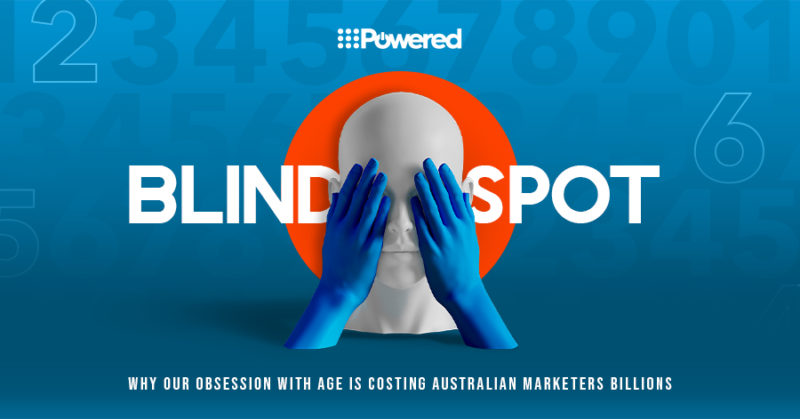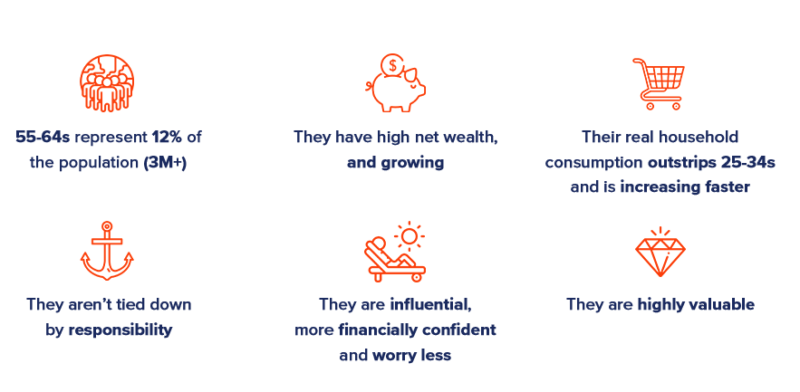Marketers need to stop ignoring ‘super consumer’ 55-64 demo, says Nine
New research from Nine’s marketing solutions team, Powered by Nine, suggests that marketers are missing a trick by continuing to obsess over the 25-54 consumer demographic.
Instead, it’s the lucrative and cashed-up 55-64 demographic that should be an important new target, according to new research conducted by Nine and Kantar called the Blind Spot.
In a virtual presentation led by Powered by Nine director of strategy, insights and effectiveness, Toby Boon, it was highlighted that 50% of the wealth in Australia is held by 20% of people over 55.

Boon asked why marketers are still obsessing over a demographic that was decided as the most important one 30 years ago when times have changed:
“Three million Australians are aged 55-64. They are valuable audiences and their household income outstrips 25-54s. What they are doing with their money might surprise you. Globally they are big spenders, and they are able to spend that way because this is their time. High levels of homeownership and less likely to have dependents… they are less burdened. They are more financially confident and worry less.
“Their status as super consumers extends beyond their own buying power. Their children, colleagues and more turn to them for advice on mortgages, or buying a new car.
“When brands talk about influencer marketing, perhaps these are the influences they need to engage. They are receptive to marketing. This is an audience which is too important to ignore, and by clinging to the 25-54 demo, brands are in danger.”
The research, conducted by Nine and Kantar, found that extending target demos to 25-64 can unlock additional household spend on goods and services by $2.3 billion every week.
“The 55-64 demo feels invisible and ignored,” Boon said. “But they have similar views to other age groups. “They have greater spending power and fewer restraints. From an advertising perspective, they are just like 25-54s but better.

So what does Nine propose advertisers do? “Simply extend your demographic targeting by ten years,” Boon said. “We know that inclusive advertising is effective advertising.
“They are habitual consumers of print channels, and mass broadcast in TV and talk-back radio remains a key part of their diet. They were also Australia’s first digital consumers too.”
For the study, Kantar gathered data from the Australian Bureau of Statistics, McCrindle and CommBank Retail Insight, and conducted eight expert depth interviews with marketers, media and creative agencies, industry leaders and advocates.
Kantar head of sensory, Denise Hamblin, added: “Our research has shown that too often this group are shown as being in a life stage of decline when life is actually on the up.
“They’re happier, more body-confident, more financially secure and less constrained by social expectations than younger groups, leaving them feeling ignored and stereotyped by media and advertising.
“There is an opportunity for advertisers to connect with them in a more aspirational light. To this end, we also know that inclusive advertising pays dividends – Kantar’s global advertising effectiveness work shows that including and portraying under-represented groups like the Super Consumers in a more positive and empathetic light can help with short-term sales lift and long-term brand growth among all consumers.”



 Linkedin
Linkedin